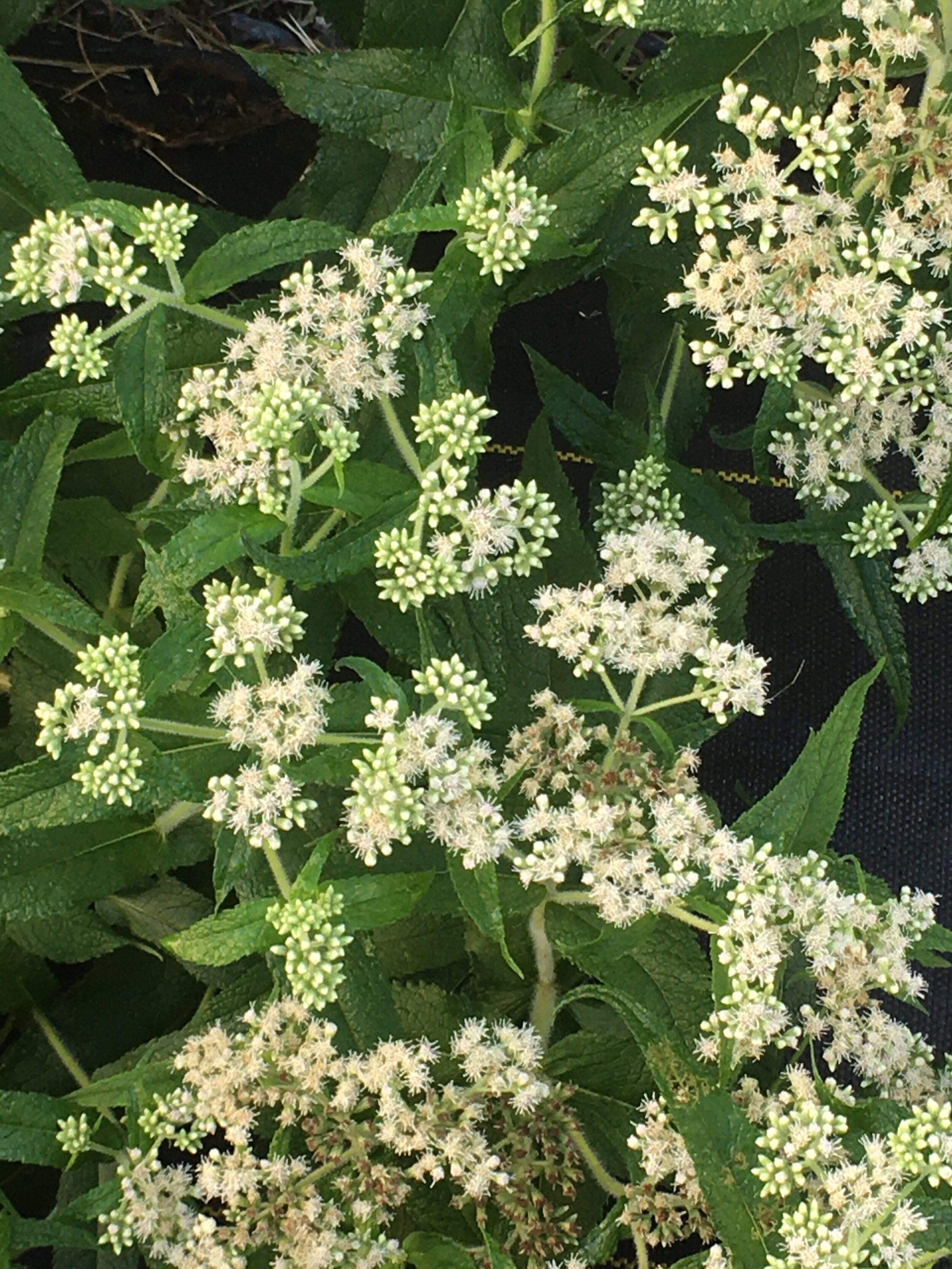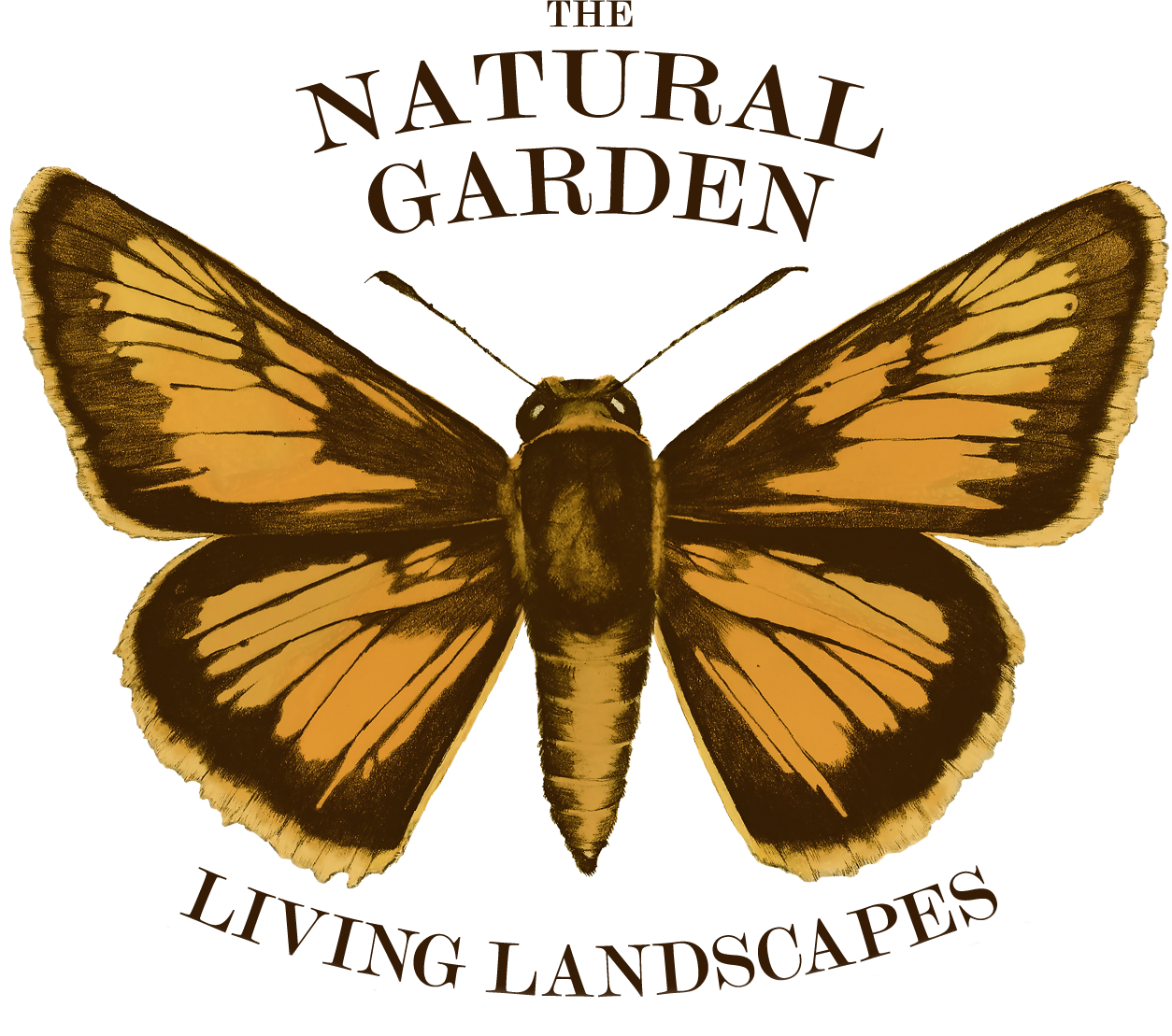 Image 1 of 4
Image 1 of 4

 Image 2 of 4
Image 2 of 4

 Image 3 of 4
Image 3 of 4

 Image 4 of 4
Image 4 of 4





Eupatorium perfoliatum (Common Boneset)
grows 4-6 ft. tall
grows in full sun to part sun
prefers moist to wet soils
white blooms from July-October
natural habitat: floodplain forests, freshwater tidal marshes, tidal swamps, bogs, fens, interdune swales and ponds, stream banks and riverbanks, wet meadows, fields, ditches
resistant to black walnut toxicity (juglone)
deer resistant
stunning when interplanted with colorful meadow plants like goldenrods, Blue Mistflower, Cardinal flower, and Great Blue Lobelia
larval host plant to Clymene moth, Three-lined Flower Moth, and Boneset Borer Moth
associated with yellow-faced bees, ming bees, sweat bees, bumble bees, green sweat bees, assassin bugs, sand wasps, paper wasps, bald-faced hornets, bee wolves, beetle wasps, potter wasps, grass-carrying wasps, thynnid wasps, soldier beetles, cuckoo wasps, thread-waisted wasps, tachinid flies, syrphid flies, thick-headed flies, bee flies, Virginia creeper clearwing moths, monarch butterflies
grows 4-6 ft. tall
grows in full sun to part sun
prefers moist to wet soils
white blooms from July-October
natural habitat: floodplain forests, freshwater tidal marshes, tidal swamps, bogs, fens, interdune swales and ponds, stream banks and riverbanks, wet meadows, fields, ditches
resistant to black walnut toxicity (juglone)
deer resistant
stunning when interplanted with colorful meadow plants like goldenrods, Blue Mistflower, Cardinal flower, and Great Blue Lobelia
larval host plant to Clymene moth, Three-lined Flower Moth, and Boneset Borer Moth
associated with yellow-faced bees, ming bees, sweat bees, bumble bees, green sweat bees, assassin bugs, sand wasps, paper wasps, bald-faced hornets, bee wolves, beetle wasps, potter wasps, grass-carrying wasps, thynnid wasps, soldier beetles, cuckoo wasps, thread-waisted wasps, tachinid flies, syrphid flies, thick-headed flies, bee flies, Virginia creeper clearwing moths, monarch butterflies
grows 4-6 ft. tall
grows in full sun to part sun
prefers moist to wet soils
white blooms from July-October
natural habitat: floodplain forests, freshwater tidal marshes, tidal swamps, bogs, fens, interdune swales and ponds, stream banks and riverbanks, wet meadows, fields, ditches
resistant to black walnut toxicity (juglone)
deer resistant
stunning when interplanted with colorful meadow plants like goldenrods, Blue Mistflower, Cardinal flower, and Great Blue Lobelia
larval host plant to Clymene moth, Three-lined Flower Moth, and Boneset Borer Moth
associated with yellow-faced bees, ming bees, sweat bees, bumble bees, green sweat bees, assassin bugs, sand wasps, paper wasps, bald-faced hornets, bee wolves, beetle wasps, potter wasps, grass-carrying wasps, thynnid wasps, soldier beetles, cuckoo wasps, thread-waisted wasps, tachinid flies, syrphid flies, thick-headed flies, bee flies, Virginia creeper clearwing moths, monarch butterflies





